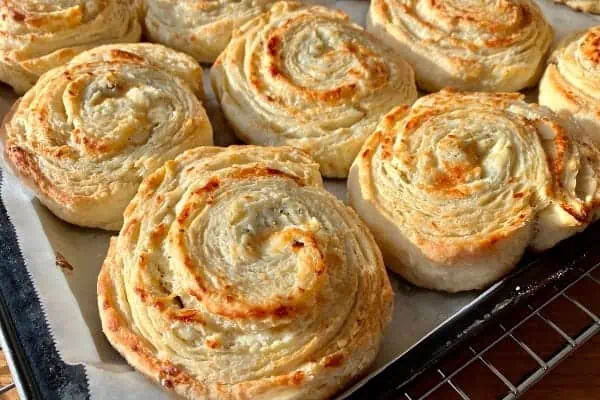This is a funny time of year in the Yukon. The return of the light and the moving forward of the clocks speaks to the impending arrival of spring.
The other day I stood outside my cabin and heard birds calling their songs out, and thought… am I just noticing these calls, though they have been singing throughout the winter, or are they singing because spring is coming?
Then, just when I was ready to put away the parka and get ready to start looking for green shoots, we had the better part of a foot of snow dumped on us, and it looked more like a winter wonderland than any time since November!
I’ve been thinking that my wine tasting has been along the same lines.
I’ve recently been very good with my money diet, trying some tasty, yet moderately-priced reds from Spain and Portugal (more on them in a future article).
Then I had a terrific dinner last Sunday evening at some friends’, and suddenly they were opening and serving two amazing, delicious, and WAY too good California cabernet sauvignons and Italian Barolos. Let me tell you about them!
My friends M and J have a terrific 15-month-old son whom I have seen way too little of during his first year, as he has progressed from new arrival to daredevil, head-first slides down his Tiny Tots slide.
His parents invited me for dinner last Sunday, and I took a very promising bottle of Spanish tempranillo,grenache syrah red blend that I had wanted to try for some time.
Imagine my delight when I arrived to find steaks on the grill, scalloped potatoes with sherry in the oven, a beautiful salad on the table, and two big red wines opened and breathing.
My Spanish blend was parked for another evening as I contemplated the two bottles of red wine, one New World and one Old, ready for our exploration.
M, a fellow wine lover, had recently stopped at the Whitehorse Liqour Store, and had found to new additions on the shelves.
I stopped by later and learned that these might be one-shot purchases, but keep your eyes peeled in case they get them back in. If you get over to Alaska, and if you are lucky, you might be able to find at least one for $25 to $30 a bottle on the U.S. side.
We first tasted the Italian Barolo from the Piedmont region of north-western Italy—a lovely, big 2005 Barolo Damilano Lecinquevigne, which is a substantial investment at around $50 a bottle.
This Wine Spectator magazine 90-point wine had been breathing for about 45 minutes when we tasted it, and continued to improve and get more nuanced through the course of the meal and evening.
M told me the next day that the last remaining taste in the bottle, at the end of the evening, was even better!
This reminded me, once again, how much improved good Italian wines become if they are allowed to breathe (stand and interact with air) before they are tasted. Half an hour for more modest reds is great, but one to two hours for wine of this calibre is not out of line.
The fun can be, as we learned, tasting the wine over the course of two to three hours, and seeing how it changes over that time.
Hugh Johnson, a noted wine writer says of Barolo: “By general consensus, Italy’s greatest red… the finest [are] subtle [and] elegant.”
He could have been describing this particular Barolo! Made from 100 percent nebbiolo grapes, it must be aged a minimum of three years before it can be released.
The wine was a deep ruby red, with slight orange highlights, and M and I tasted notes of berries, spices and herbs such as cinnamon and mint, tones of dark fruit, smooth silky tannins and a long and almost slightly sugary finish (the taste in your mouth after you swallow).
Wow! It was perfect both by itself and with the steaks from Stacey’s Butcher Block that we washed down.
The second wine of the evening (the second we tasted, not in any way the lesser), was a 2008 California Beringer Knight’s Valley Cabernet Sauvignon ($46.45 at the YLC).
What M and I first noted was how similar we both thought the bouquet was to the Barolo, despite the fact that the wine came from a different grape, an ocean and a continent away!
These coincidences are among the interesting things that sometimes emerge when you taste two wines back-to-back.
This Wine Spectator 88-point was also delicious and equally well matched the wonderful dinner.Beyond the bouquet, we seemed to taste cherry and ripe, plump plum, black cherry, chocolate, blackberry and tobacco flavours.
Again, we noticed sweeter, almost caramel notes as we swallowed and savoured the last hints of the finish.
I am conscious of the fact that, as I struggle to find adjectives to describe the tastes, particularly when tasting big, full-bodied but really refined wines like the two from this evening, I feel as if I am sounding like a wine snob.
While there are established wine vocabulary characteristics—including some that I use in describing these two wines—the objective of the struggle as you taste is to find a vocabulary you can share with a friend and fellow wine enthusiast, where you can look for, and point out, the features you are both tasting.
That struggle for the right words is hard enough when you are sitting together sharing a wonderful meal among friends. Believe me, it’s even harder to try to convey when you write about it.
Even if I can’t adequately convey the tastes we enjoyed, I hope you will get a sense of my enthusiasm for the tasting experience of these two wines, and indeed all the wines I write about.
Perhaps that enthusiasm will propel you to explore more of the wines of the world.
Cheers!




